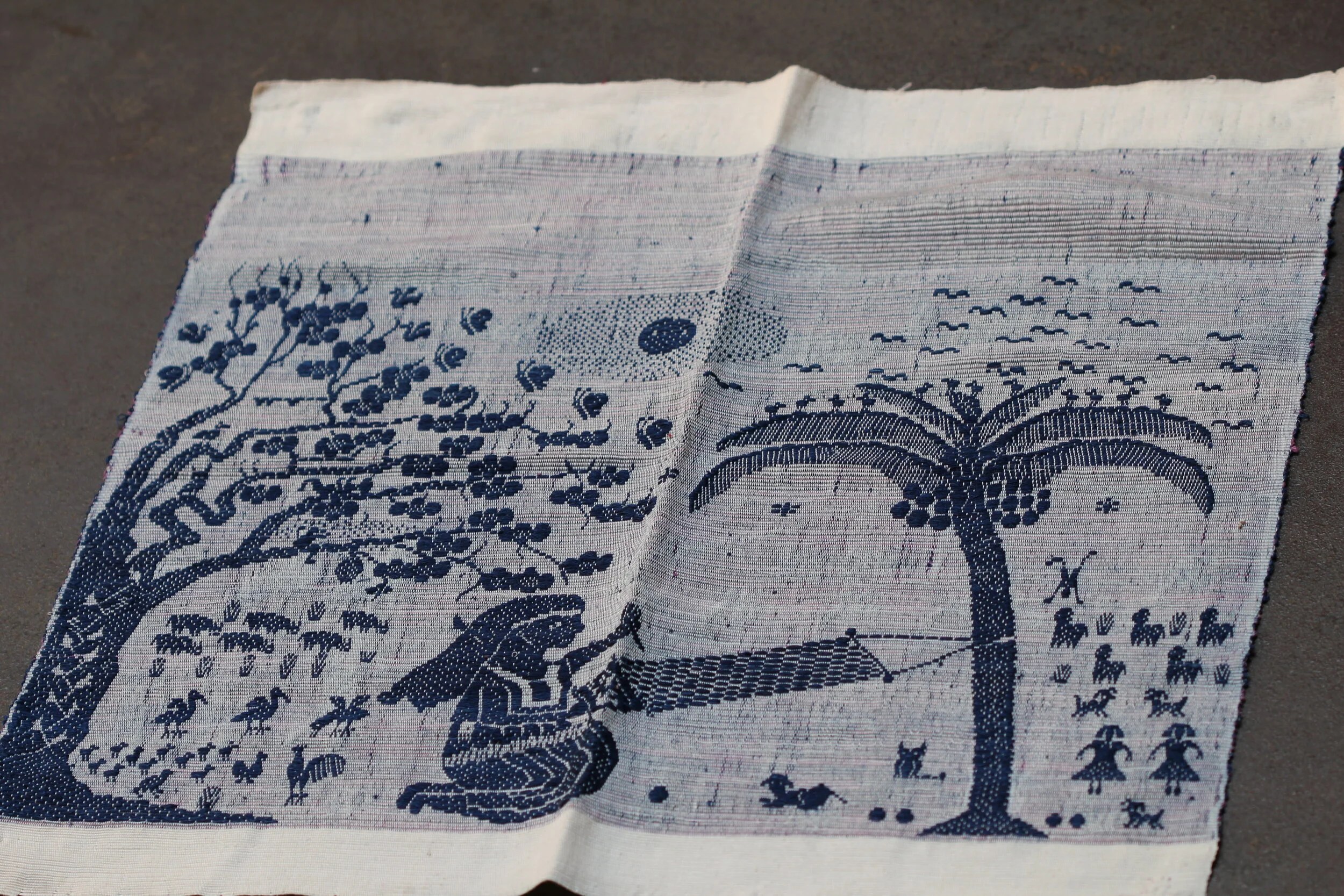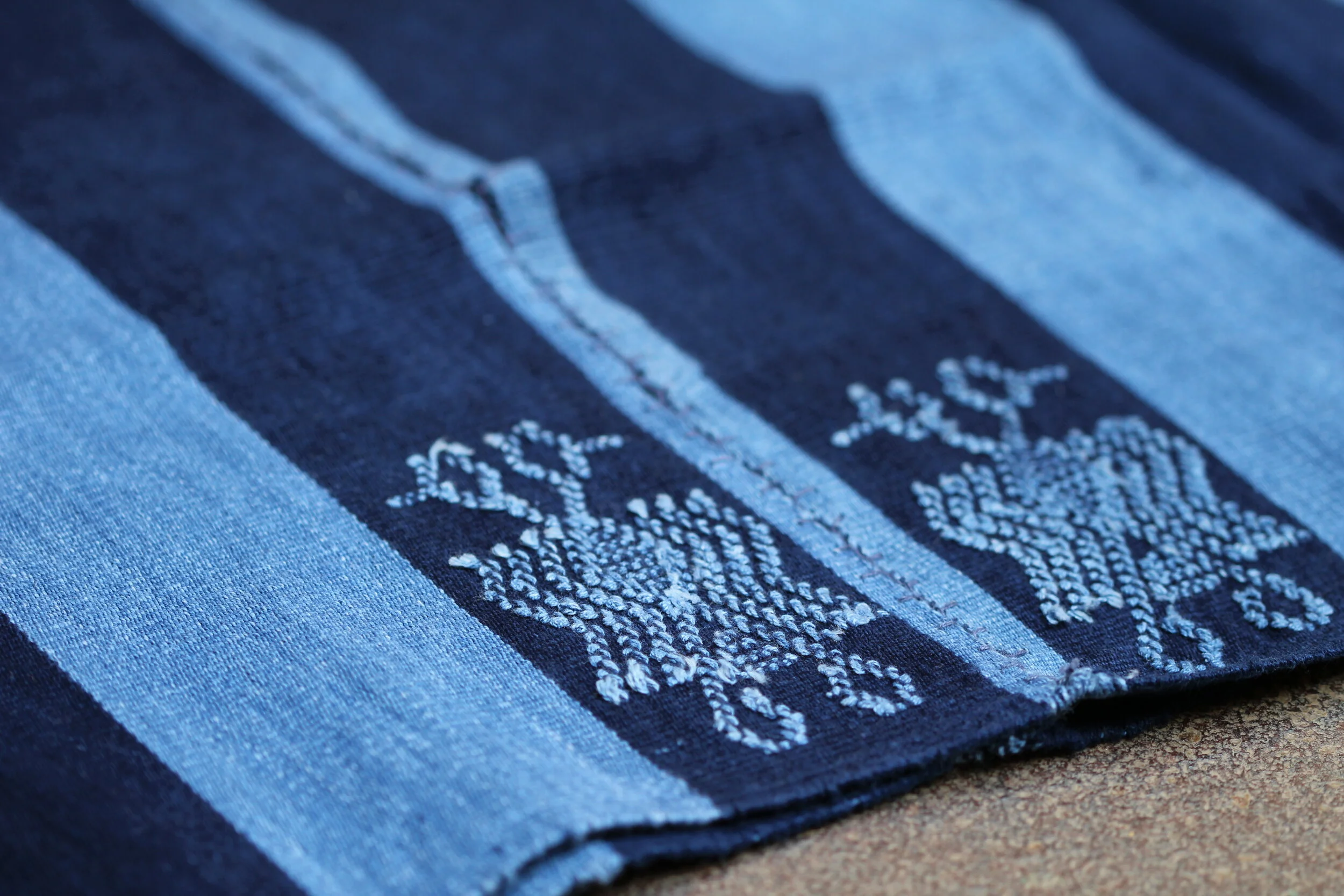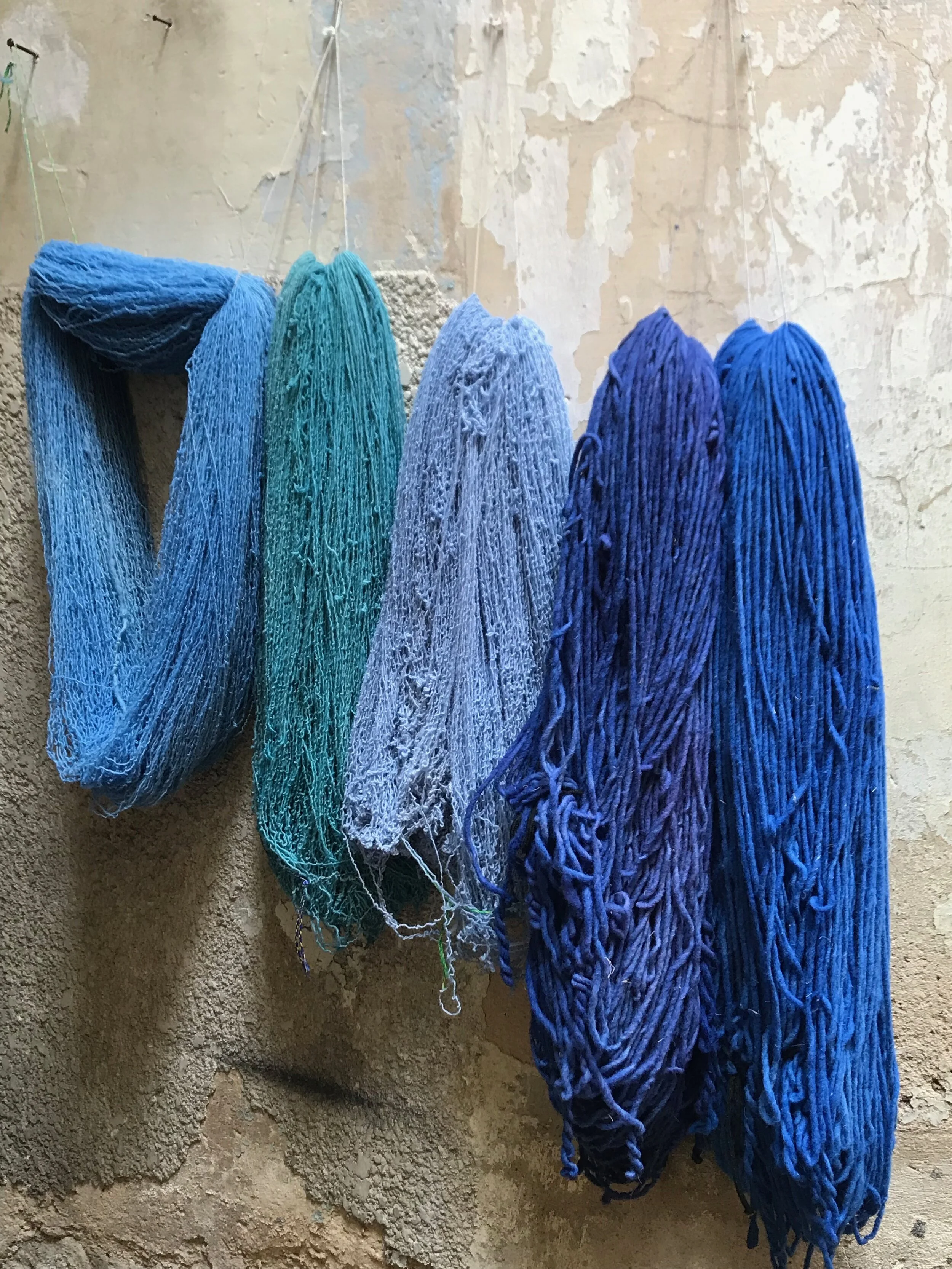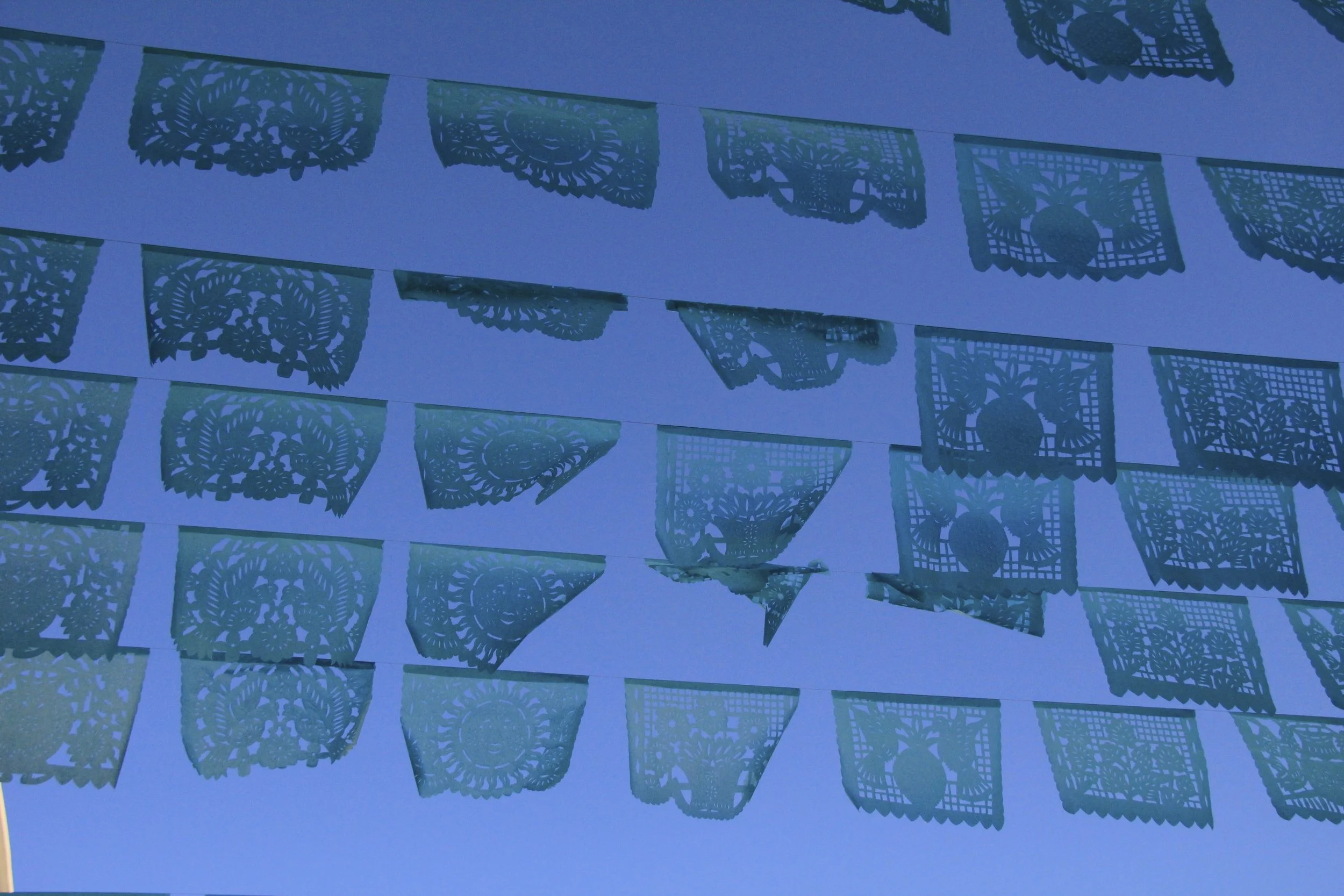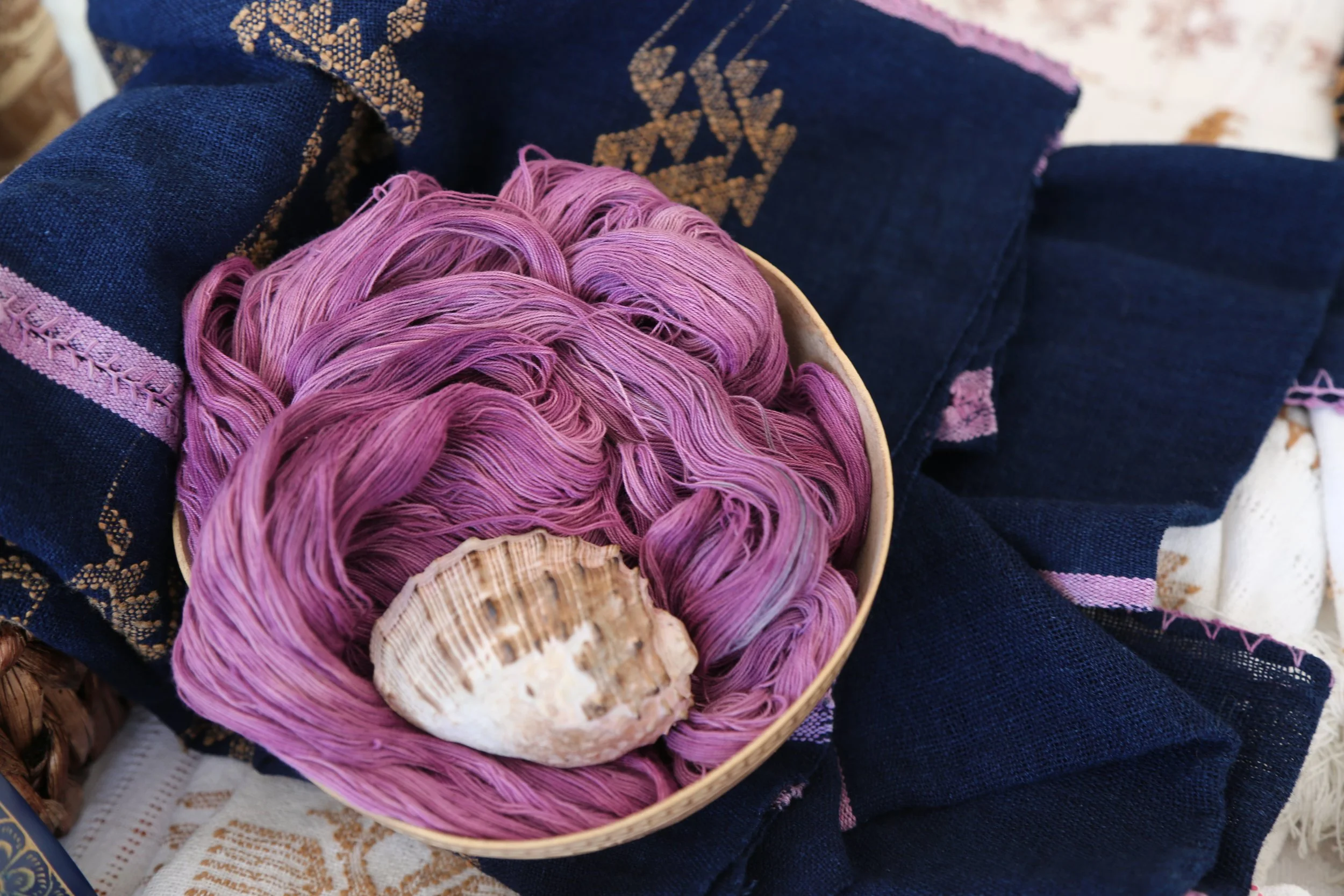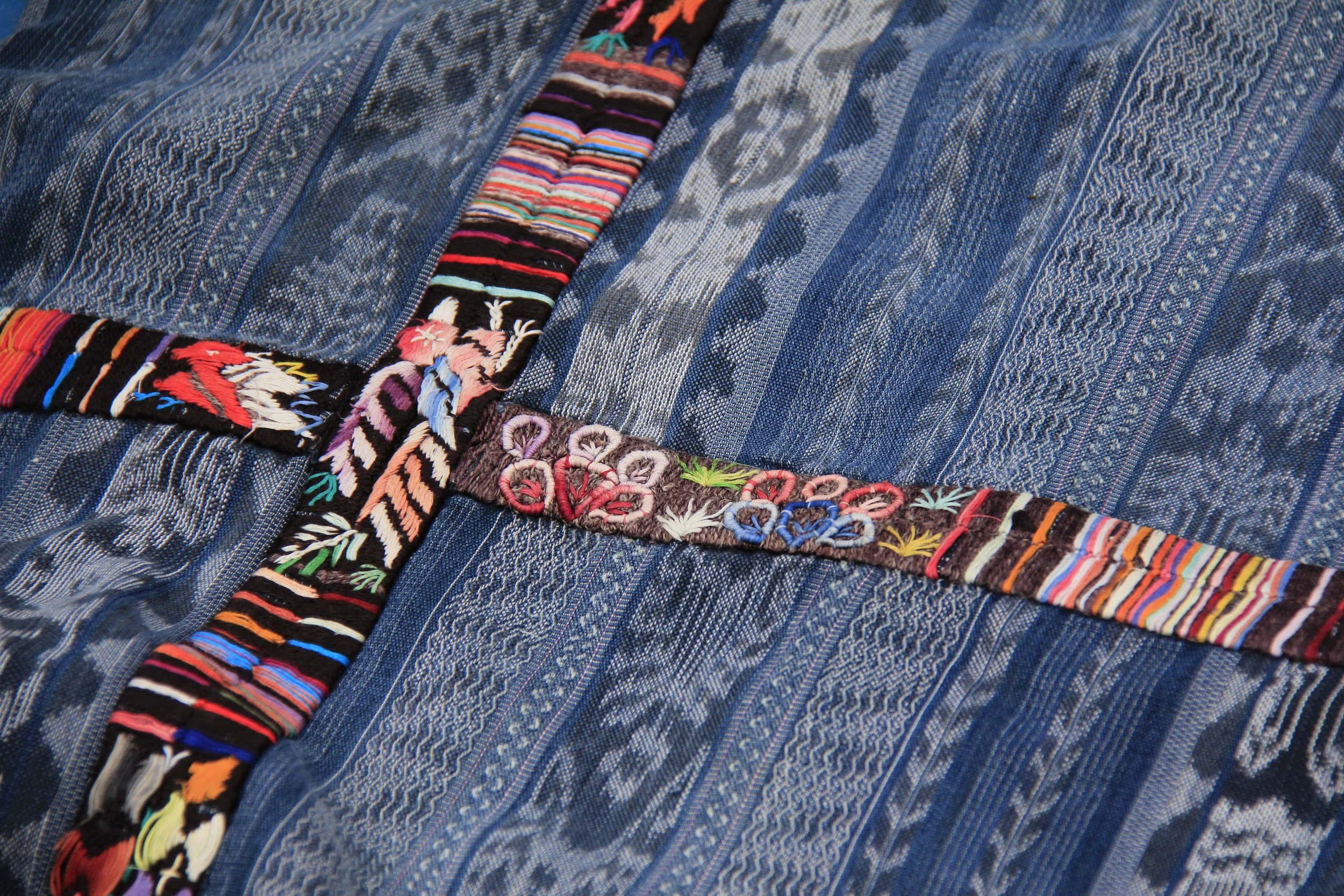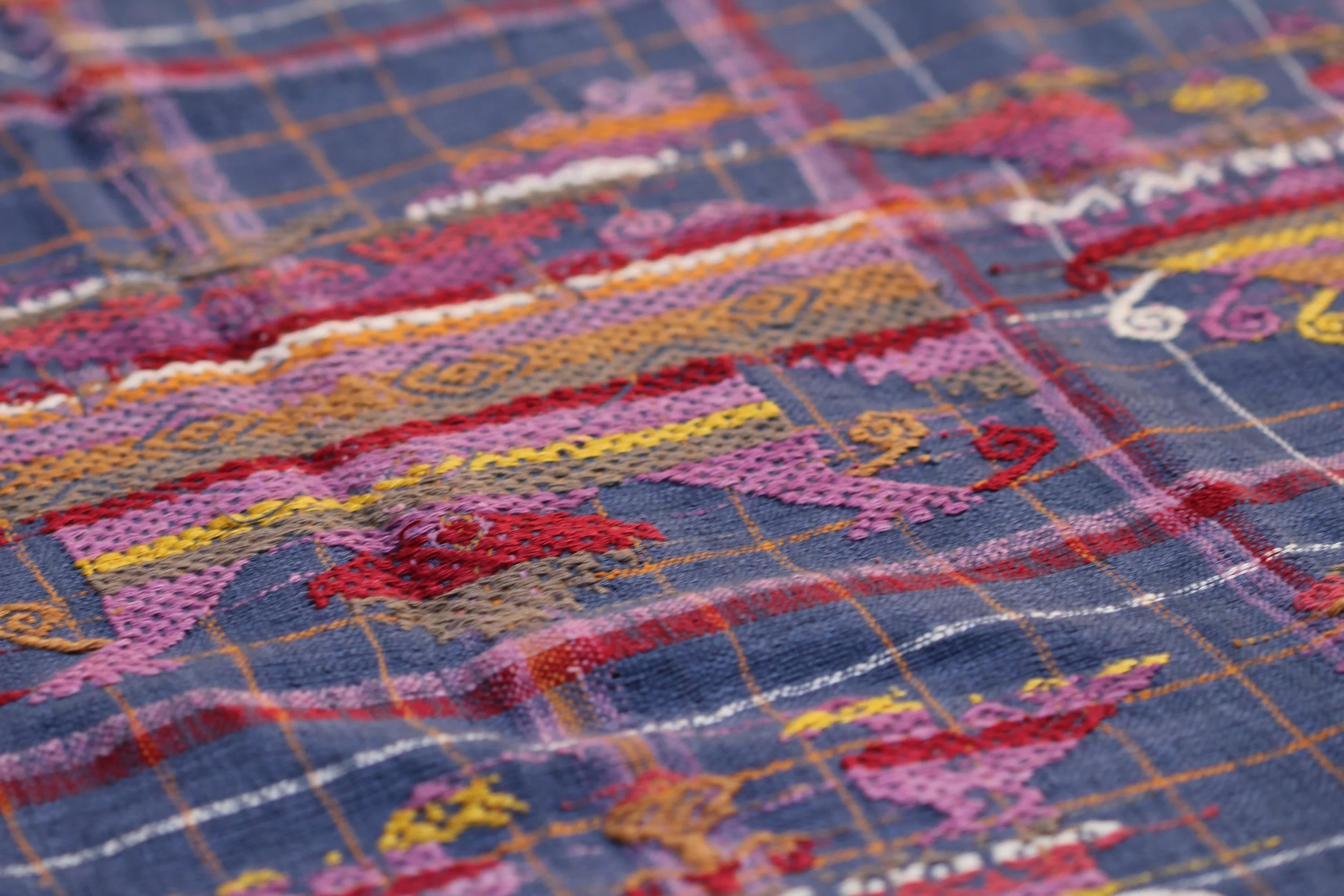What is XTANT?
currently or actually existing
still existing: not destroyed or lost
XTANT is a tabula rasa, a white canvas, a fresh piece of paper.
…To bring a new vision and content to a very old trade: heritage textiles.
Textiles are language. In the past humans used warp and weft before words existed. Threads were used to express individuality, status, beliefs, communities and above all, diversity.
This language was completely hijacked as a result of the industrial revolution.
As the late Antonio Pasquali reminded us, “the ability to communicate is inherent to the formation of society. And so, any modification or control of communications leads to a modification or control of society itself.”
Hence, we propose taking back control of the language: Recuperating the language of textiles.
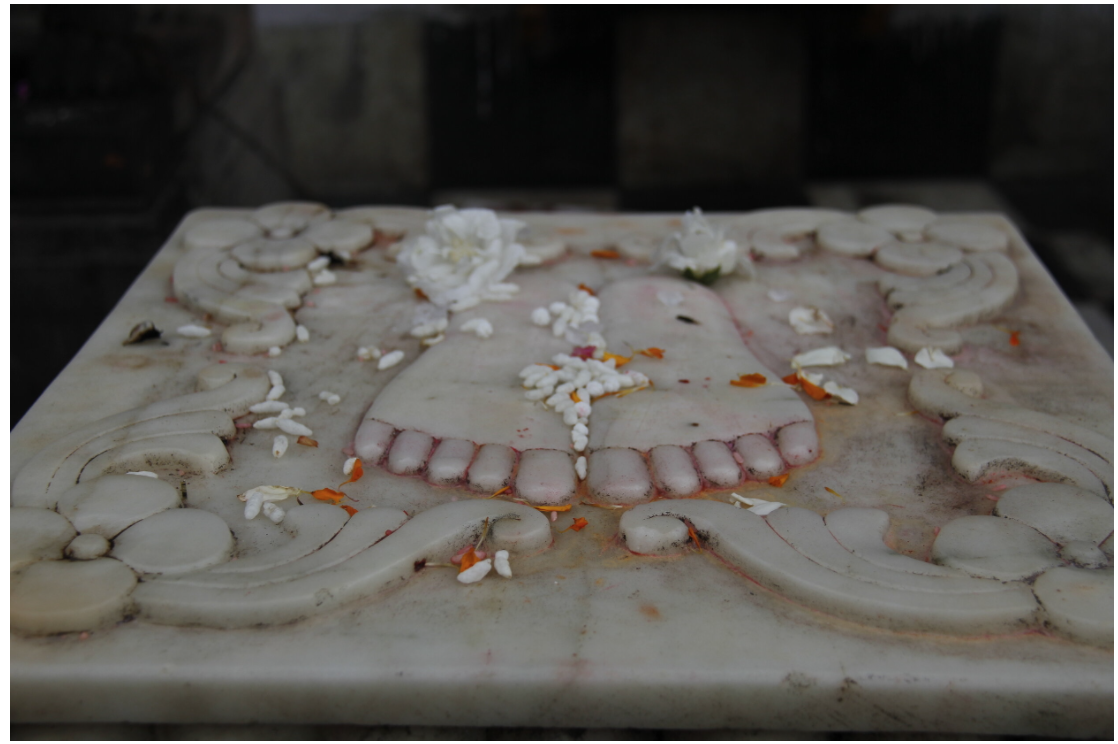
Textiles are texts and sources of information; they contain codes and signs that speak of roots, continuity and strength. They define their own cultural richness and recreate the way of seeing the world. It is through textiles that the individual reaffirms their cultural identity of the group and assumes oneself as part of a group of people.
A reminder that homo sapiens knew how to weave before we learnt how to write. We have used textiles as a medium to pass on information before we started copying parchments. Women and indigenous communities (the ones most excluded from our current decision making) are the experts in this field.
In the words of Eduardo Galeano, “Whoever writes, weaves¨. Text comes from the Latin, “textum” which means tissue. With strings of words we are saying, with strings of time we are living. Texts are like us: fabrics that walk.”
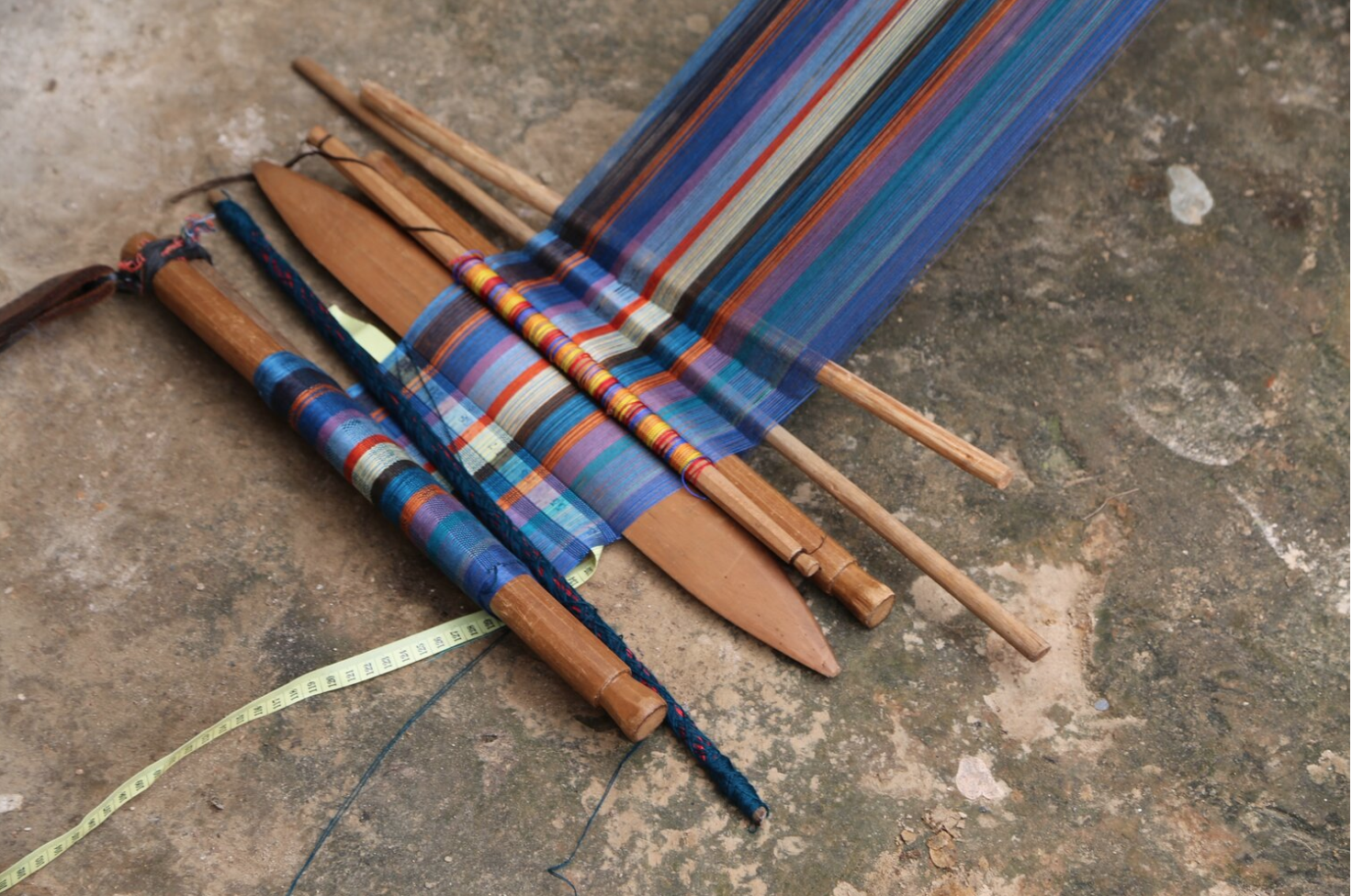
I am a self confessed textile addict and have spent most of my career playing archeologist. I am happy to report that the language of heritage textiles is alive and vibrant. Hidden from the mainstream, sometimes even used as a pretty decoy but mostly dismissed as inconsequential and something unscalable hence irrelevant. It is the exact opposite; heritage textiles are alive and are at the perfect scale: The Human scale.
With my dear friend Marcella Echavarria, I curated the first global gathering/ exhibition in Mexico City of heritage textiles, ancient techniques, master craftspeople and passionate humans and we called it TEXTO | 2020.
The incredible success of that event right before the world came to a halt was a great teacher. We received innumerable messages from people who attended telling us how it changed their lives. Someone beautifully described it as a mix between Burning Man, TED conference and a village fair.
Why XTANT now?
Since the great pause, we have taken it upon oursleves to clean up our altars (what we venerate) and we propose for XTANT to be the platform where new altars can be built using the right words with their original meanings.
“Clothes have, they say, more important offices than merely to keep us warm. They change our view of the world and the world’s view of us… There is much to support the view that it is clothes that wear us and not we them; we may make them take the mould of arm or breast, but they mould our hearts, our brains, our tongues to their liking.” Virginia Woolf
Over the past years, so much has been clarified for us– and others – about what is essential, what we can eliminate, and what we want to emerge. The global pandemic laid bare excruciating systemic inequality and weaknesses in numerous aspects of our society; it also reminded us of what true heroes look like. We witnessed epic failures of leadership, and incredible acts of generosity. Identified what can be done well remotely while highlighting the power and beauty of community. What is clear is that this proverbial ring of fire through which we are passing leaves little doubt about what really matters: home; relationships; health – of our planet, our minds and bodies, and our loved ones-; connection; meaningful work; and what we hope is a renewed and invigorated commitment to true diversity, equity, inclusion, and belonging.
“The clothes that protect us, that make us laugh, that serve as a uniform, that help us assert our identity or aspirations, that we wear to remember someone — in all of these are encoded the stories of our lives. We all have a memoir in miniature living in a garment we’ve worn.” Emily Spivack, Worn Stories.
XTANT´s goals
TRACE IT AND SHARE IT
We believe textiles should embody the same respect that the food industry holds for its ingredients, origins, and producers. One of the greatest challenges in the fashion industry is its growing disconnection from the essence of textiles—a loss of the vernacular that ties heritage fabrics to the community, history, culture, and ecosystem from which they emerge.
This disconnect is akin to a chef who lacks an understanding of their ingredients, crafting recipes without awareness or reverence for their source. It results in a shallow, cut-and-paste approach to creativity, disregarding the depth and authenticity of origin. At XTANT, we aim to bridge this gap, fostering a renewed appreciation for the stories and traditions that every thread carries.
DEGROWTH : A Return to Balance
Small is Beautiful. Looking Back to Move Forward. Revaluing Heritage.
Degrowth is not a retreat—it is a recalibration, a quiet rebellion against excess. It begins with the recognition that we live in a world of limits, where resources are finite, and the future hinges on restraint and reverence. To ensure the survival of humanity and the planet, we must slow the relentless churn of production and consumption and instead nurture cycles that sustain life.
At its heart, degrowth seeks balance—a harmony between creation and preservation, consumption and care. It is a call to redress inequities and to reimagine prosperity not as a measure of GDP but as a celebration of well-being, community, and connection.
This vision is not about shrinking but about regenerating. The industrial systems that dominate today—linear, extractive, and wasteful—are stretched to their breaking point, depleting resources and suffocating the ecosystems we depend on. To move forward, we must let go of short-term gains and dream on a grander scale: not three-year business plans but 100-year legacies of renewal.
INTER REALM REGENERATION
Regeneration, at its core, is a return to life—a rekindling of vitality across all realms: animal, vegetable, mineral, astral, and spiritual. It is not merely about restoring what is lost but reawakening a deeper understanding of our role as humans, not as rulers but as shepherds, caretakers of the Earth. This wisdom is embedded in the myths and stories of countless ancient cultures and religions, reminding us of our sacred duty to protect and nurture the intricate web of life.Modern humanity, consumed by self-obsession, has reduced nature to a mere resource—a means to satisfy insatiable desires. We have forgotten that we are not separate from the Earth but an integral part of its complex, symbiotic, and awe-inspiring system. Gaia, Mother Earth, does not exist for us; she exists with us. In our extractive and self-serving ways, we inch toward our own extinction, blind to the reality that the Earth will endure and regenerate without us, as the pandemic so starkly revealed.
The time has come to reject the narrative of conquest—dreams of colonizing distant planets with the same exploitative mindset—and instead reexamine the ancient wisdom that binds us to this planet. These stories, these echoes of the past, remind us of a truth we can no longer ignore: we are not alone. We are threads in a magnificent tapestry of interdependence, where every realm contributes to the whole.
To regenerate is to remember. To heal. To reconnect. It is an urgent call to honor this fragile, beautiful system we call home and embrace our role as stewards of life, in all its forms, across all its realms.
"Whatever you do will be insignificant, but it is very important that you do it." Mahatma Gandhi
Kavita Parmar
*Pictures by Marcella Echavarria

